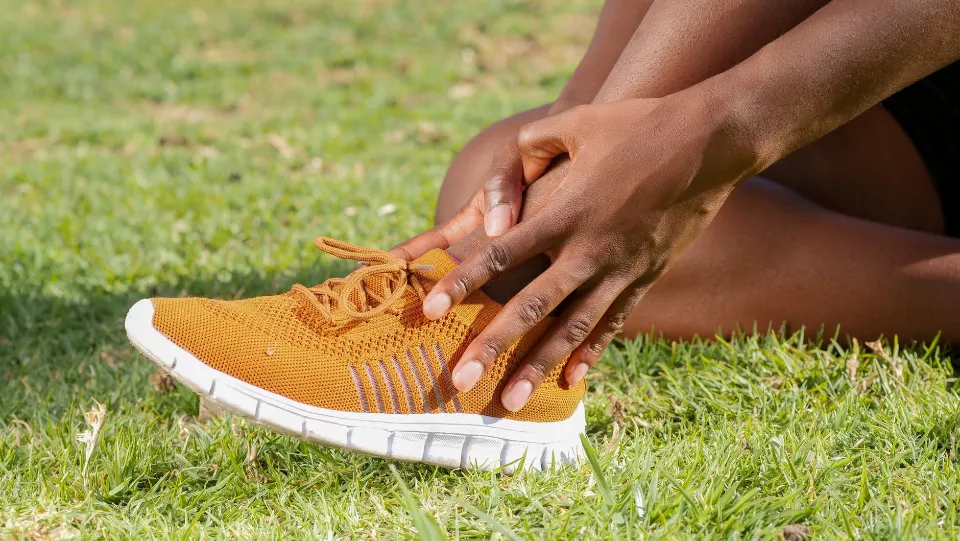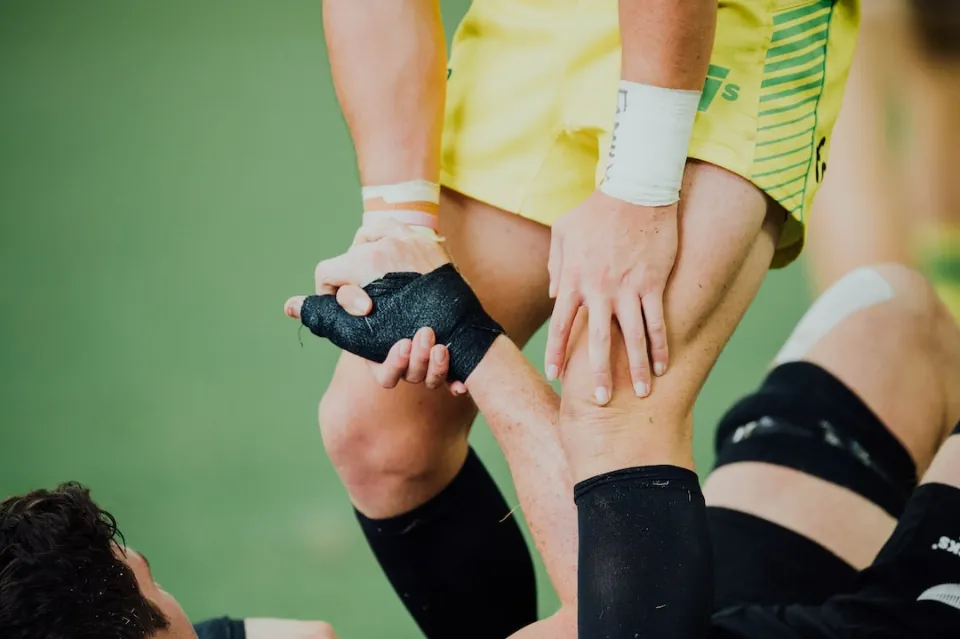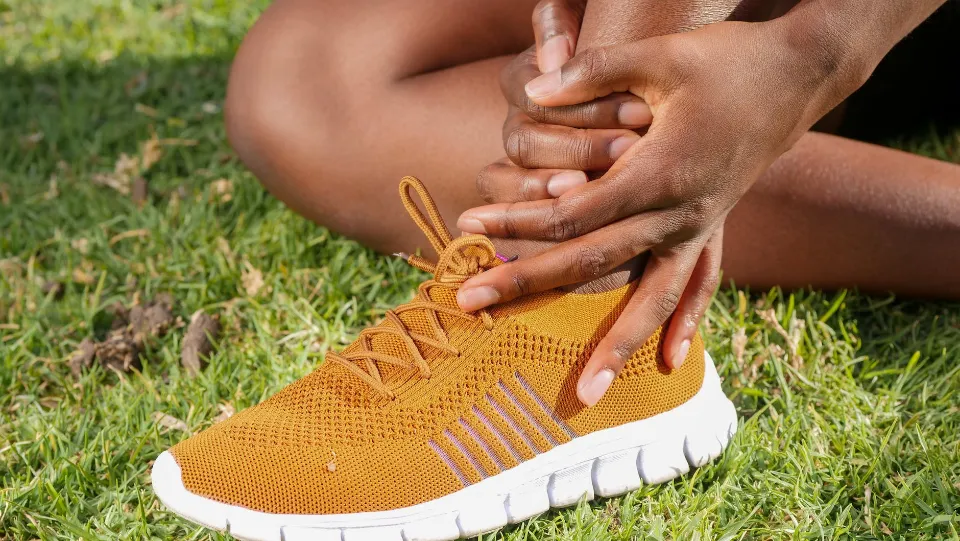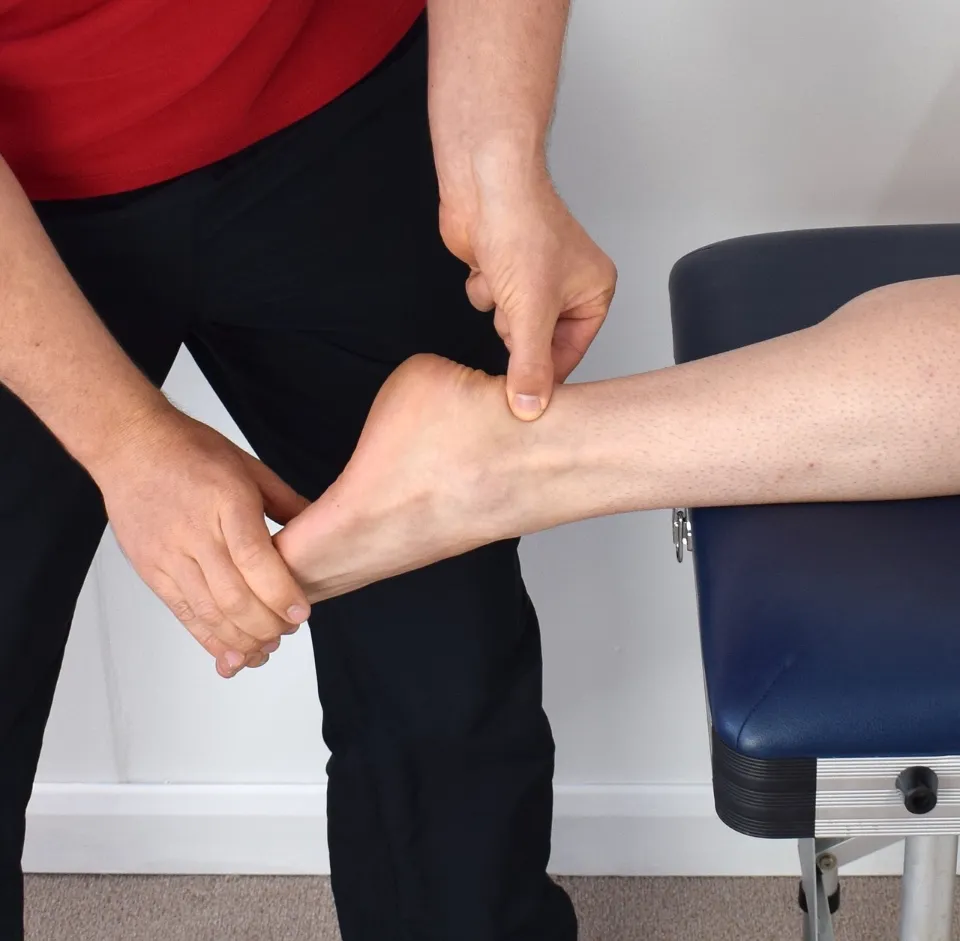
How to Prevent Ankle Pain After Running – Essential Tips and Techniques
Running can suffer from the frustrating setback of ankle pain, which can impede their progress and enjoyment. However, ankle pain can be effectively avoided and managed with the right methods and safeguards.
In this article, we’ll give you the crucial advice and methods you need to maintain pain-free, healthy ankles after running. You’ll learn a thorough method for keeping strong, stable ankles, including appropriate warm-ups, stretching exercises, and recovery techniques.
In order to fully enjoy your runs, bid adieu to ankle pain that would come on after a run.
What Causes Ankle Pain After Running?
Ankle pain following a run could have a variety of causes. It can be a persistent problem at times. Other incidents might seem insignificant, but if they go untreated, they could develop into much more serious problems.
Strains, sprains, or tears in the muscles are the most frequent causes of ankle pain. They frequently happen when the runner’s foot becomes suddenly unstable while they are running. Running on an uneven surface or a sudden change in speed or direction could cause this.
When strained beyond their normal range of motion, ligaments are especially prone to injury. You’ve probably experienced the pain of a sprained ligament if you’ve ever rolled your ankle inward or outward while running. The ligament may partially or completely tear in more severe situations.
Types of Ankle Injuries Due to Running

The fact that an ankle injury can recur after being sustained makes it one of the most frequent running injuries. Here are a few typical ankle injuries.
Ankle Sprains
Rolling or twisting your ankle, frequently while exercising, can cause an ankle sprain. As a result, the ligaments in your ankle that connect the bones are strained or torn.
Treatment depends on the severity of the injury and may include:
- Rest, ice, and compression
- Pain-relieving medications
- Rehabilitation exercises to regain strength and motion in the ankle
- Surgery — rarely needed for an ankle sprain
Sprains may be annoying. Six months may be needed for a severe sprain to heal. Sprains are typically less predictable than breaks because there is typically a clear, well-traveled path to recovery. The recovery of ankle mobility can be aided by visiting an orthopedist or physiotherapist.
Ankle Strains
Injury to the muscle or tissue of the ankle results in an ankle strain. Swelling, bruising, and tenderness at the site of the injury are some of the typical symptoms of an ankle strain. Rest, ice, and compression are the mainstays of treatment for ankle sprains. Most runners can return to sports with caution two to four weeks after their injuries have healed on average. How long you need to reduce activity and the course of treatment will depend on how severe the strain is.
Stress Fractures
These are fractures in the bone brought on by repeated trauma. If you haven’t warmed up sufficiently before running or haven’t stretched after your run, this is more likely to occur. If your feet are flat or have a high arch, you run the risk of suffering this injury. The main cause of this stress is biomechanical—when the bones are overloaded with pressure for an extended period of time. Choosing the right running shoes can lessen the strain on your shins and ankles.
The severity of the fracture will determine how it is treated. Rest, ice, compression, and elevation can be used to treat minor wounds. The use of crutches, physical therapy, or even surgery may be necessary for more severe injuries.
Tendinitis
A tear in a tendon is called tendinitis. Inflammation and swelling result from overworking the tendon, which causes it to happen. Tendons are powerful tissue bands that connect muscle to bone. Achilles tendon injuries at the back of the ankle and patellar tendon injuries at the front of the knee are the two tendonitis injuries that occur most frequently.

When Should I See a Doctor for Ankle Pain?
When an ankle is hurt, there are occasionally limitations to what you can do to treat it at home. It might be time to visit a Dallas orthopedic surgeon if you’ve tried all the suggested remedies above without success. Schedule an appointment with us if you have any of these symptoms:
- Pain that lasts more than a few days
- Inability to run after a week of rest
- Numb or unstable ankles
- General redness or red streaks extending from the injury, indicating an infection
- Inability to put weight on the injured ankle
- Frequent ankle injuries
How to Prevent Ankle Pain After Running
Preventative measures while running are essential for preventing ankle injuries. Here are some strategies you can use to improve the health of your muscles, tendons, ligaments, and joints on a daily basis.
Wear the Right Shoes

Because every pair of feet and every pair of shoes differs, it can be challenging to determine which shoe is best for running. Choosing the appropriate shoes for the type of surface you’re running on is also crucial. It all comes down to how comfortable the shoe is for you to run in. According to one study, runners who wore comfortable shoes reported fewer injuries. Other advice for choosing the best running shoes is to make sure they fit properly and don’t irritate your skin while you’re exercising. Last but not least, check to see if your shoes are too tight or too loose.
Read More: How to Break In Running Shoes
Don’t Run on Uneven Surfaces
Ankle overpronation, or when your foot rolls inward, is a risk when running on uneven surfaces. This is particularly valid if you go from running on a smooth surface to one that is uneven. You’re not used to the new track texture, which is why this is happening.
Make Sure to Warm Up and Cool Down
For any type of exercise, it’s crucial to warm up and cool down because they can speed up recovery and help you avoid injury. Try warming up before your next run with a slow jog, brisk walk, or jumping jacks. After your run, stretching or a leisurely stroll are excellent ways to cool down.
Build Up Endurance and Don’t Overwork Yourself
Avoid pushing your body to the point of exhaustion if you want to start running regularly or if you just want to improve your endurance. By gradually increasing your run time or switching between running and walking, you can build up to the level of running you want. Running being a high-impact sport, it’s also crucial to include low-impact sports in your exercise routine to safeguard your joints and avoid harm. Low-impact exercises include dancing, yoga, swimming, biking, and hiking.

Strengthen the Feet and Ankles
Include these exercises in your daily routine to strengthen your feet and ankles.
- Calf drop: Put your heels over the edge of the step as you stand there. Slowly stand up on your toes, then lower your heels to the step you are currently standing on. For calf stretches and Achilles tendon strengthening, repeat this several times daily.
- Toe writing: sit in a chair, raise one foot, and start writing the alphabet with your toes without moving your leg muscles. Do this with both feet, please. Although it may make you feel silly, this exercise will significantly increase ankle stability and strength.
- Towel pickup: Place your feet on a floor towel as you sit in a chair. Start scrunching or picking up the towel with your toes while keeping your heels on the floor. Your foot’s plantar fascia may become more flexible after doing this exercise.
- Heel and toe walking: Walk around first on your toes and then your heels. Your ankles can become stronger from this exercise, and it can also help with balance.
- Ankle circles: sit comfortably, raise a foot, and begin moving your ankle in circles. Achieve this on both ankles, if possible.
Conclusion
Eight out of ten serious runners, according to the running community, will experience an injury within a calendar year. Therefore, if running is a regular part of your exercise routine, some level of pain is practically inevitable.
Running-related ankle pain should be taken seriously. If your muscles, ligaments, or tendons don’t have a chance to recover, it could be a sign of further health issues.





Average Rating